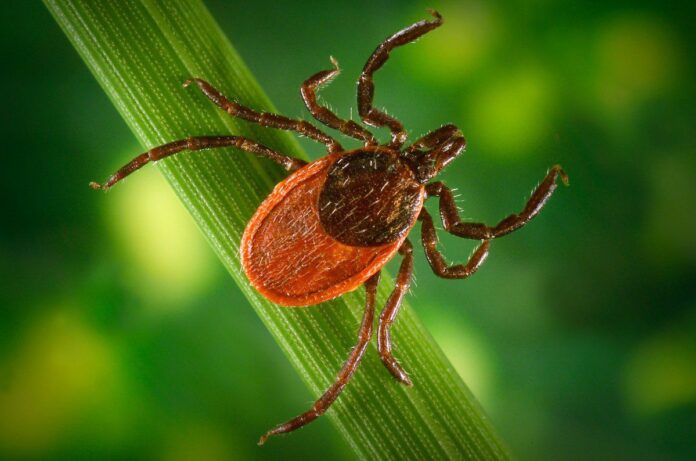UNIVERSITY PARK, Pa. — As spring temperatures rise, many people will spend more time on outdoor activities, increasing their risk of encountering pathogen-carrying ticks.
To help the public avoid tick bites, Penn State Extension experts are observing Lyme Disease Awareness Month in May by reminding people about various resources available to aid in protecting themselves, pets, horses and loved ones from Lyme disease and other tick-borne diseases.
Lyme disease affects more than 475,000 people each year, according to estimates from the Centers for Disease Control and Prevention. Reports on this tick-borne pathogen indicate that Pennsylvania ranks No. 1 in the country for the number of Lyme disease cases per year.
Ticks transmit disease-causing pathogens through their bites. Early symptoms of Lyme disease may include headache, fever, sore throat and nausea, according to extension experts. If left untreated, the disease can cause debilitating rheumatologic, cardiac and neurological conditions.
Education
To educate the public about tick risk and tick bite prevention, Penn State Extension offers many resources, including the “Tick Webinar Series.” These free recorded webinars concentrate on ticks and tick control in working and hunting dogs, companion pets and horses. They provide practical steps that pet and horse owners can take to minimize the risk of tick bites.
The webinars also cover tick protection for the home and backyard, tick habitats, and common tick-borne diseases. Hunters who spend long days in the Pennsylvania woods may benefit from a webinar focused on methods to avoid insect bites and vector-borne diseases during hunting season.
Extension also offers tick removal kits for $18. This zippered pouch contains tools and instructions for removing ticks from human skin. The kit includes a tweezer, magnifying glass, triple antibiotic ointment, tick collection and testing cards and other equipment. Extension also offers tick removal kits specifically for pets or horses for $15.
Prevention
Machtinger pointed to the following recommendations for preventing tick bites and tick-borne diseases:
• Avoid tick-infested areas, especially in May, June and July.
• Wear light-colored clothing to easily spot ticks.
• Wear long-sleeved shirts and long pants. Tuck your pants into your boots.
• Use an Environmental Protection Agency approved insect repellent, such as those containing DEET, picaridin, oil of lemon eucalyptus, or IR3535.
• Pretreat clothing with permethrin before wearing it outdoors.
• After being outdoors, remove your clothing and wash and dry it at a high temperature. Inspect your body carefully. If possible, shower within an hour of coming inside.
If you’ve been bitten
How do you know if you’ve been bitten?
• You may see the tick still attached to your skin.
• A red rash that grows over time may appear on the skin.
• The center of the lesion may clear, resulting in a rash with a ring-like, or “bull’s-eye,” appearance. Not everyone who is infected gets this rash, and it can be more difficult to identify on darker skin tones.
What to do after a tick bite?
• Use tweezers to remove the tick. Grasp the tick as close to the skin surface as possible and pull straight back to avoid crushing the tick’s body and leaving parts attached to the skin.
• Monitor the bite area for a rash and watch for early symptoms of Lyme disease.
• Talk to your doctor. Depending on your situation, antibiotic treatment may be recommended.
• Residents can send ticks to the Pennsylvania Tick Lab for testing. Experts note that ticks that test positive for a pathogen don’t necessarily transmit illness, while a negative test result doesn’t guarantee safety from tick-borne diseases.
Penn State Extension provides free tick identification services. Pennsylvania residents can take specimens to their county’s extension office for identification.
If needed, local extension educators will send the sample to Penn State’s Insect Identification Laboratory. The laboratory’s director, Michael Skvarla, is available at mxs1578@psu.edu or 814-865-3256.












